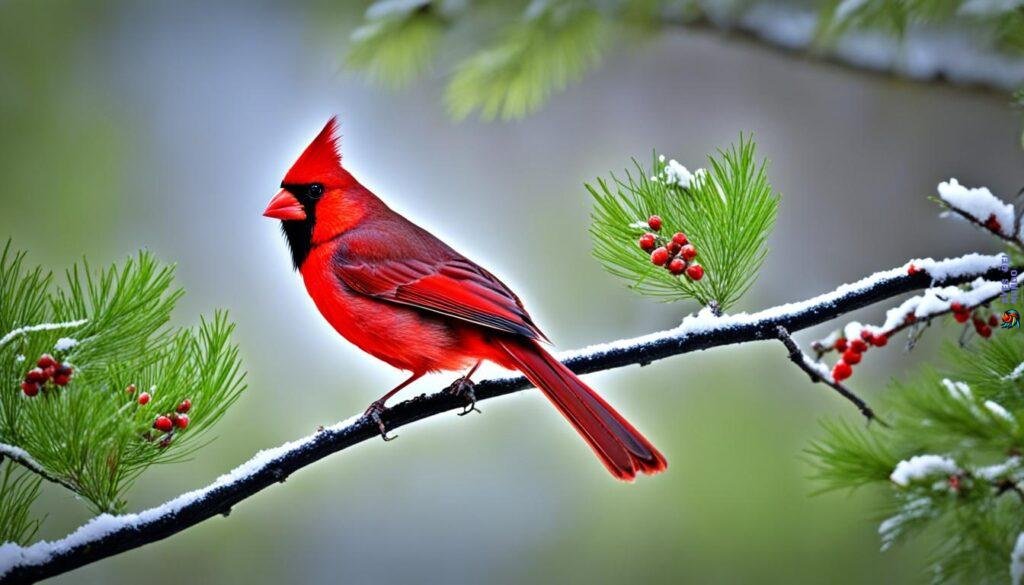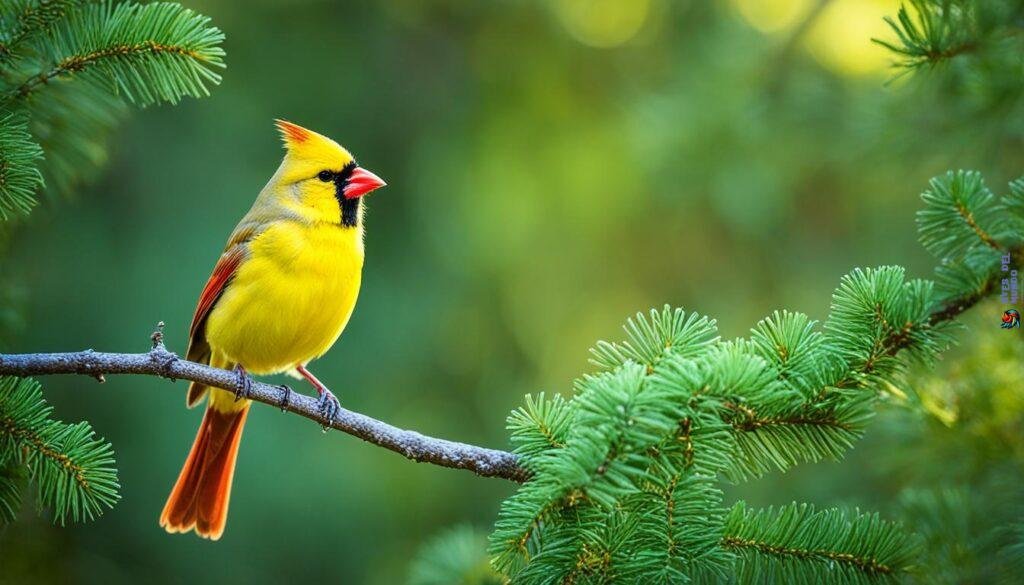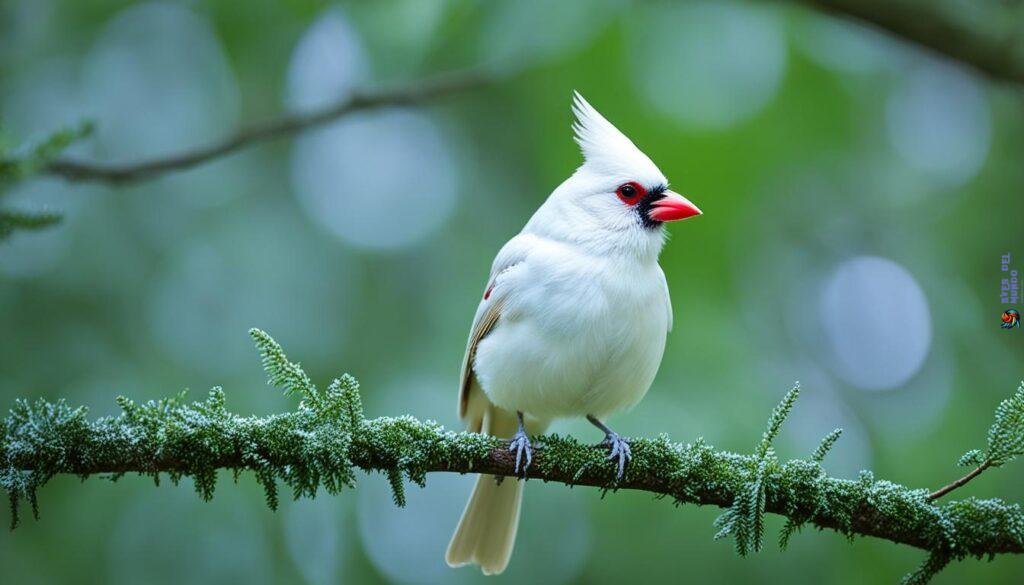Did you know that there are various types of cardinals, each with its own unique characteristics and habitats? These vibrant and captivating birds have fascinated birdwatchers and nature enthusiasts for years. From the iconic Northern Cardinal to potential new species in the deserts, the world of cardinals is full of surprises.
In this article, we will delve into the different types of cardinals and explore their distinct traits and natural habitats. We will start with the well-known Northern Cardinal, a lively showstopper with its bold red plumage and distinctive crest. Then, we will uncover the potential new species that have emerged in the Sonoran and Chihuahuan Deserts, highlighting the evolutionary diversity within the cardinal family.
But that’s not all! We will also introduce you to other color variations and species of cardinals, including the yellow and white cardinals that defy expectations. Finally, we will share tips on how to create cardinal-friendly habitats in your own backyard, so you can attract these beautiful birds and enjoy their presence.
So, whether you’re a seasoned birder or just starting your birdwatching journey, join us as we explore the fascinating world of cardinals and discover what makes them truly remarkable.
The Northern Cardinal: A Lively Showstopper
The Northern Cardinal is one of the most well-known and easily recognizable types of cardinals. With its vibrant red feathers and distinctive crest, this bird is a favorite among birders and nature enthusiasts. Male Northern Cardinals feature bright red plumage, while females display beautiful brown feathers tinged with rosy accents.
You can spot the Northern Cardinal across a large range in the eastern half of the United States, including parts of Mexico and Guatemala. Unlike some migratory birds, Northern Cardinals are not migratory and can be seen in various habitats, from backyards and parks to forests and even deserts.

The Northern Cardinal is not just visually stunning; it also has a delightful song. Their call is a cheerful and melodic «What cheer!» that resonates through the trees, adding a vibrant soundtrack to its already captivating presence.
The Sonoran and Chihuahuan Desert Cardinals: Potential New Species?
Recent studies suggest that the populations of Northern Cardinals in the Sonoran Desert and Chihuahuan Desert may have diverged into separate species. These populations have been isolated from each other for hundreds of thousands of years and show distinct genetic differences. Researchers have also observed variations in their songs, with the Sonoran Cardinals preferring songs from their own population and the Chihuahuan Cardinals reacting aggressively to songs from their cousins. While these potential new species are still being studied, they highlight the evolutionary diversity and complexity within the cardinal family.

Distinct Genetic Differences
Through genetic analysis, scientists have discovered that the Sonoran and Chihuahuan Desert Cardinals exhibit significant genetic variations. This suggests that these two populations have evolved separately over time, potentially leading to the emergence of distinct species.
«The genetic differences between the Sonoran and Chihuahuan Desert Cardinals are comparable to those found between closely related bird species,» explains Dr. Anna Martinez, lead researcher of the study. «These findings indicate that these populations may have reached a point where they are no longer interbreeding and may be on the path to becoming new species.»
Variations in Songs
Another interesting aspect of the Sonoran and Chihuahuan Desert Cardinals is their differing song preferences and responses. Research has shown that the Sonoran Cardinals tend to favor songs from their own population, while the Chihuahuan Cardinals exhibit aggression towards songs sung by their cousins from the Sonoran Desert.
«This behavior suggests that the variations in songs could serve as a reproductive barrier,» states Dr. Martinez. «By preferring songs from their own population and reacting aggressively to songs from other populations, these cardinals may be maintaining their genetic isolation and reinforcing potential speciation.»
While additional research is still needed to confirm the status of the Sonoran and Chihuahuan Desert Cardinals as separate species, these findings shed light on the ongoing evolutionary processes within the cardinal family. Understanding the complexities of this diverse bird group adds to our appreciation of the natural world and the wonders of avian biodiversity.
| Key Findings | Sonoran Cardinals | Chihuahuan Cardinals |
|---|---|---|
| Potential species status | Under study | Under study |
| Distinct genetic differences | Present | Present |
| Variations in song preferences | Prefer songs from own population | React aggressively to songs from Sonoran Cardinals |
Other Color Variations and Species
In addition to the well-known red Northern Cardinal, there are other color variations and species of cardinals. These unique variations add to the allure and intrigue of the cardinal family.
Sometimes, a genetic mutation called xanthochroism can make cardinals yellow instead of red. This striking color change can be attributed to a recessive gene that affects the pigmentation of the feathers. Although yellow cardinals are rare, they are a sight to behold and a testament to the natural diversity of these birds.
Similarly, leucism can also result in cardinals with white plumage. Leucistic birds, also known as «ghost birds,» have a genetic condition that prevents the production of normal pigments, resulting in their unique appearance. While it may be uncommon to come across a white cardinal, they are a fascinating phenomenon within the cardinal species.
Another notable member of the cardinal family is the red-crested cardinal. Unlike its red counterpart, the red-crested cardinal possesses a vibrant red crest atop its head. These birds can be found in regions such as Hawaii, South America, and Puerto Rico, bringing their own distinctive flair to the diverse array of cardinals around the world.
| Color Variation/Species | Appearance | Habitat |
|---|---|---|
| Yellow Cardinal (xanthochroism) |  | Eastern and southern United States |
| White Cardinal (leucism) |  | Various regions |
| Red-crested Cardinal |  | Hawaii, South America, Puerto Rico |
Creating Cardinal-friendly Habitats
To attract cardinals to your backyard, it’s important to create an ideal habitat for them. Cardinals appreciate open woodlands with a mix of grass, shrubs, and trees. Planting native trees and shrubs, such as box elder, eastern red cedar, nannyberry, and shrub roses, can provide the dense cover that cardinals prefer for nesting and roosting.
Additionally, offering bird feeders with large seeds like sunflower or safflower can attract cardinals and provide them with a food source. By scattering seeds on the ground or using platform feeders, you can accommodate cardinals’ feeding behaviors. It’s important to note that cardinals are ground-feeding birds, so placing feeders in open areas will make them feel more comfortable.
Creating a welcoming environment for cardinals also involves providing a water source. Installing a birdbath or a shallow dish with fresh water will not only attract cardinals but also support their hydration and bathing needs. Ensure that the water source is cleaned regularly to maintain its freshness and prevent the spread of diseases.



